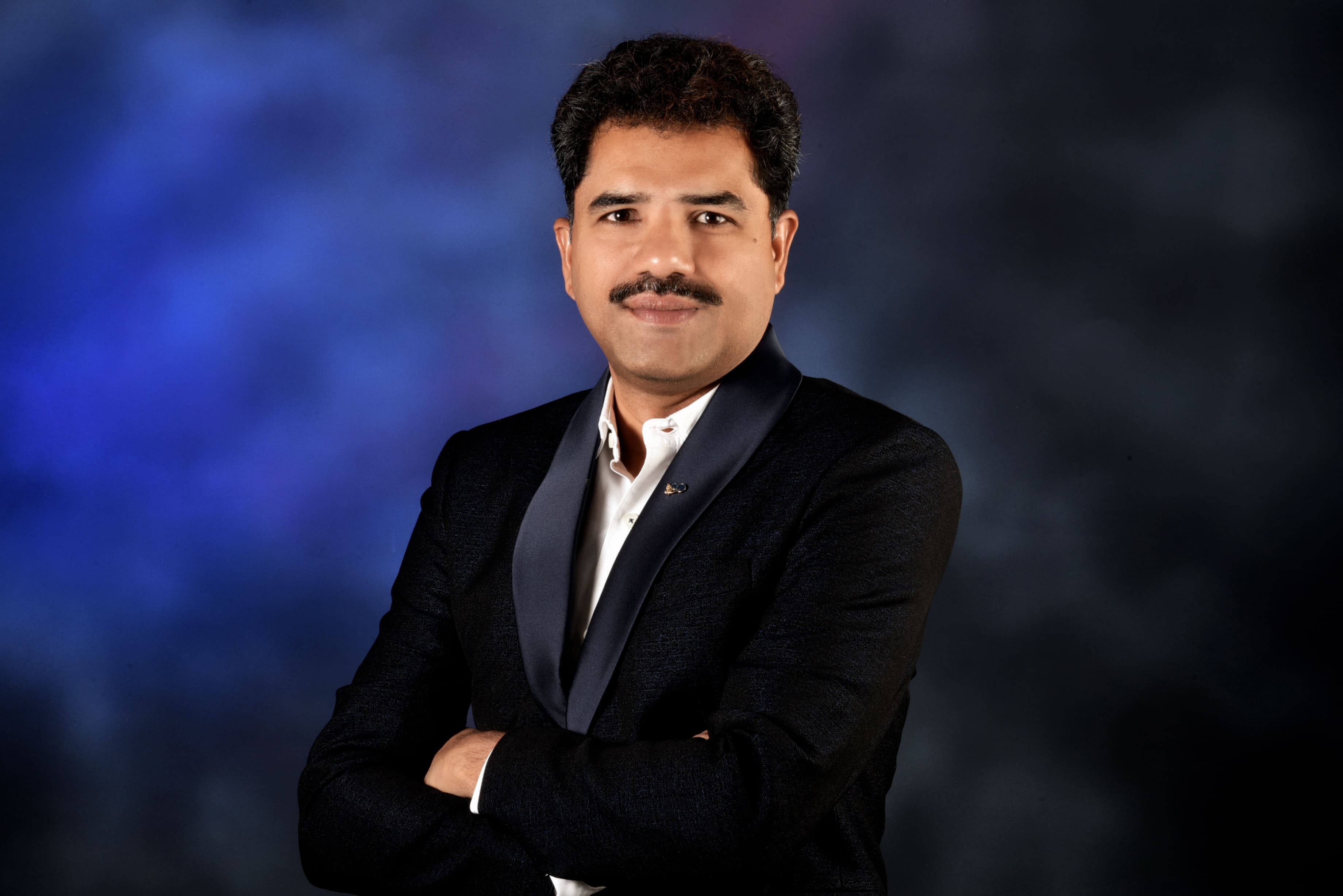With the global IT-outsourcing market already worth about USD 526 billion/ ₹45.4 trillion and still growing (GlobeNewswire).
Outsourcing software work is big business because it often costs far less than hiring full-time staff.
For example, a senior developer in the United States can charge USD 150 / ₹12,928 an hour, while a skilled engineer in Eastern Europe may cost USD 30 / ₹2,586 and some Asian teams start at USD 20/ ₹1,724 per hour. (Source 1) (Source 2)
This guide explains every factor that affects price, so you can budget smartly, avoid hidden fees, and pick the best model for your next project.
Cost of Outsourcing Software Development
Below are the different factors that contribute to the cost of outsourcing software development:
Step 1: Location Drives the Base Price
The country where your vendor's team sits is the biggest factor.
Hourly rates swing the most by geography. In the United States, a mid-level developer usually costs USD 80 - 135 / ₹6,895 - ₹11,636 per hour, and senior architects can reach USD 150 / ₹12,929 or higher Geomotiv.
Western-European talent (UK, Germany, France) averages USD 45 - 70 / ₹3,878 - ₹6,033 per hour. (SmartWorking)
Central- and Eastern-European firms sit in the middle, Czech or Polish engineers charge USD 30-70 / ₹2,586 - ₹6,033 depending on seniority. (Indexdreamix.eu)
The lowest widely used band is India and much of South/Southeast Asia, Southeast-Asian developers from USD 20 / ₹1,724 per hour, with some specialised teams reaching USD 45 / ₹3,879 when advanced skills are needed (Insignia Resources)
In India, the world's largest outsourcing hub, junior engineers start around USD 18 / ₹1,551, while experienced seniors range USD 40 - 50 / ₹3,448 - ₹4,310 (Dev Technosys.)
These gaps exist even after adjusting for quality. Many Indian and Eastern-European engineers hold the same certifications as their Western peers but live in lower-cost regions.
Lower-cost regions still keep solid code quality. Picking the right geography like moving your project from a U.S. vendor to a vetted Indian team can, on labour alone, trim well over 50 percent of the hourly spend, while still letting you hire seniors instead of juniors for the same budget.
Step 2: Project Complexity Sets the Final Bill
A basic web MVP (few screens, no heavy integrations) built by a U.S. team can cost USD 25 k / ₹21.55 lakh.
The same scope in Western Europe lands around USD 18 k / ₹15.51 lakh. (brainhub.eu.)
Move the project to Poland or Romania and the price drops to roughly USD 12 k / ₹10.34 lakh; an experienced Indian agency can do it for USD 10 k / ₹8.62 lakh (1840andco.com)
As complexity rises, gaps widen. Add multi-tenant dashboards, payment flows, or mobile apps and mid-range SaaS budgets rise to USD 120 k / ₹1.03 crore in the USA, USD 90 k / ₹77.57 lakh in Western Europe, USD 60 k / ₹51.72 lakh in Eastern Europe, and USD 45 k / ₹38.79 lakh in India.
Enterprise-grade platforms with AI features easily cross USD 400 k ~ ₹3.45 crore in the West yet stay near USD 250 k / ₹2.16 crore with top-tier Indian or Ukrainian vendors. (Insignia Resources)
Why the jump? Every extra feature means more design, code, tests, and QA cycles.
APIs, third-party integrations, and compliance checks also add senior hours, so even in low-cost regions, a complex scope quickly lifts the total price tag.
Step 3: Engagement Model Changes Risk and Cost
Hourly or staff-augmentation deals feel flexible but can balloon if the timeline slips.
Suppose you need two senior and two mid developers for six months. In a staff-aug model the U.S. rate of USD 120 / ₹10,343/hour balloons to USD 225 k ~ ₹1.93 crore in payroll alone.
Fixed-scope Western-European bids come in near USD 160 k / ₹1.38 crore; Eastern-European project quotes hover around USD 110 k / ₹94.81 lakh. (brainhub.eu.)
Indian vendors average USD 80 k / ₹68.95 lakh for the same scope (Your Team In India)
Fixed-scope (project) contracts cap price, but any change request costs extra.
With outcome-based pricing, the vendor carries more schedule risk, so they work faster and communicate clearer.
With outcome-based pricing you define the deliverable, for example, "finish feature X by March" and pay a flat USD 70 k / ₹60.33 lakh no matter how many hours it takes.
Industry surveys show buyers moving to outcome-based agreements that tie payment to a finished deliverable, cutting overruns by 20 - 30 %. because the vendor, not you, carries timeline risk. (wild.codes)
Step 4: Team Mix and Seniority Shift Hourly Rates
Inside every quote you'll see a role spread: in the United States, a senior cloud architect can bill USD 150 / ₹12,929 per hour, while a junior QA tester might be USD 40 / ₹3,448. (Dev Outsourcing Solutions.)
Western-European seniors cluster around USD 85 / ₹7,326, mids at USD 55 / ₹4,740.
Eastern-European seniors cost USD 50 / ₹4,310 and juniors USD 25 / ₹2,155. (Geniusee)
Indian seniors average USD 40 ~ ₹3,448, with juniors as low as USD 18 ~ ₹1,551 (Your Team In India)
Balancing roles saves real money. A lean mix might use one senior for architecture, two mids for core features, and juniors for testing.
Ask vendors for a skill-matrix breakdown and trim any roles that add limited value, this often cuts thousands of dollars (or lakhs of rupees) over a multi-month build.
Step 5: Hidden Costs: The 15 % Surprise
Budget leaks rarely show up in the headline rate. Timezone overlap matters, paying a U.S. PM to meet an Indian team for two shared hours each day adds roughly USD 40 x 2 x 120 hrs = USD 9.6 k / ₹8.29 lakh over six months.
Western-European overlap is cheaper, one hour a day at USD 50 / ₹4,310 totals USD 6 k / ₹5.17 lakh.
Add extra SaaS seats (issue trackers, CI/CD runners) and you easily hit the common 15 % hidden-cost penalty. (Radixweb)
Currency swings also hit long projects; a 5 % INR slide against USD on a USD 100 k / ₹86.19 lakh Indian contract raises the rupee bill by ₹4.3 lakh overnight. Fix milestones in USD or hedge with partial payments to keep budgets steady
Protect yourself by adding a 10 % contingency line, documenting every user story in plain English, and using shared dashboards for real-time scope and currency tracking.
Step 6: Average Savings vs. In-House Teams
An in-house U.S. senior developer at USD 150 / ₹12,929/hr costs about USD 300 k / ₹2.59 crore annually.
Outsourcing that role to Western Europe runs USD 70 / ₹6,033/hr or USD 140 k / ₹1.21 crore annually. (brainhub.eu.)
Eastern Europe drops to USD 50 / ₹4,310/hr or USD 100 k / ₹86.19 lakh annually
India to USD 40 / ₹3,448/hr or USD 80 k / ₹68.95 lakh annually. (Your Team In India)
When you total salaries, health benefits, recruiting fees, office space, and gear, outsourcing still saves 40 - 70 % for most companies especially for short contracts or specialised skills, before you factor shorter contracts, no benefits, and quicker ramp-down after launch. (Insignia Resources)
Those rupees or dollars can fund marketing, new features, or simply extend your runway. (The Times of India)
Savings are highest when you combine low-cost regions, well-defined scope, outcome-based billing, and strong communication, precisely the setup platforms like AiDOOS provide.
Step 7: How AiDOOS helps reduce the real cost of outsourcing
AiDOOS cuts waste right at the start. You post a clear deliverable, such as "add Stripe payments to our app" and the platform's AI matches you with vetted experts in minutes.
Budget, deadline, and acceptance tests are fixed up front, so there are no hourly overruns, surprise scope-creep fees, or hidden licence add-ons.
Because payment is released only after your tests pass, you pay strictly for a finished result, not for time spent.
Many teams report saving 25-50 %compared with standard time-and-materials deals, while still getting senior talent.
The savings continue as you scale. AiDOOS taps a global talent pool, so you can add an API specialist in India for USD 40 / ₹3,448/hour or a senior UX designer in Eastern Europe for USD 50 / ₹4,310/hour, then drop those roles the moment a milestone is complete.
Built-in chat, Kanban boards, and milestone tracking remove the need for extra project-management tools, trimming more overhead.
In short, AiDOOS turns the ten best-practice tips in this guide, clear scope, outcome billing, strong communication, and flexible scaling, into one ready-made service that locks costs down and keeps delivery on schedule.
Conclusion
Outsourcing software work can save a lot of money, but only if you understand the true costs.
Rates change by region, project size, and contract model. Hidden fees like extra tool licences, re-work, and time-zone overlap can erase savings if you don't plan for them.
The safest path is to set a tight scope, use outcome-based billing, and pick a partner who shows progress early and often.
Platforms like AiDOOS make this easy by fixing the price up front and releasing payment only when your deliverable is done, so every rupee and dollar stays on budget.
Schedule A Meeting To Setup VDC![]()
Frequently Asked Questions
1. How much does software development outsourcing actually cost?
Software development outsourcing actual cost depends on different factors, a small web MVP can run USD 10 k-30 k / ₹8.6 lakh-₹25.9 lakh.
A mid-size SaaS app lands around USD 50 k-150 k/ ₹43.1 lakh-₹1.29 crore.
Big enterprise builds with AI can top USD 200 k / ₹1.72 crore. Hourly rates range from USD 20 / ₹1,724) in India to USD 150 / ₹12,929 in the USA.
2. What factors contribute to the total cost of outsourcing a software project?
Main factors contributing to the total cost of outsourcing a software project are developer location, project complexity, contract model (hourly, fixed-scope, outcome-based), team mix and seniority, and timeline.
Each adds or removes hours, which changes the final bill.
3. What hidden expenses should I watch out for in software outsourcing?
Hidden expenses you should watch out for in software outsourcing are time-zone overlap pay, extra SaaS licences, re-work from vague specs, travel, and currency swings. These often add 15-20 % to a project if not in the budget.
4. How do regional rates affect software outsourcing costs?
Regional rates affect software outsourcing costs in many ways, for example U.S. and Western-European developers charge USD 80-150 / ₹6,895-₹12,929 per hour.
Eastern-European talent averages USD 30-70 / ₹2,586-₹6,033.
Indian engineers range USD 18-50/ ₹1,551-₹4,310. The same scope can cost 2-4x more or less depending on where the team is based.
5. How can I compare the cost-effectiveness of outsourcing vendors?
To compare the cost-effectiveness of outsourcing vendors, ask each vendor for a skill matrix, hourly mix, and recent client references.
Run a small paid pilot and measure delivery speed, code quality, and communication.
Compare outcome-based quotes (fixed price for a finished result) instead of raw hourly rates.
6. How does AiDOOS lower the cost of software delivery?
AiDOOS lowers the cost of software delivery by using outcome-based pricing.
You post a clear task, its AI picks vetted experts, and you pay only when the result passes your tests.
This removes hourly overruns, hidden scope fees, and tool-licence surprises, cutting total spend by up to 50 % while keeping timelines tight.

